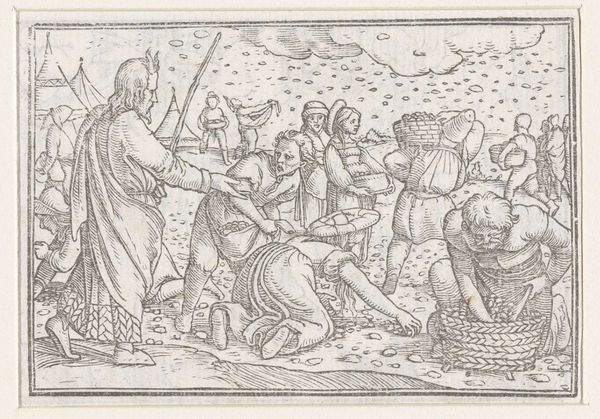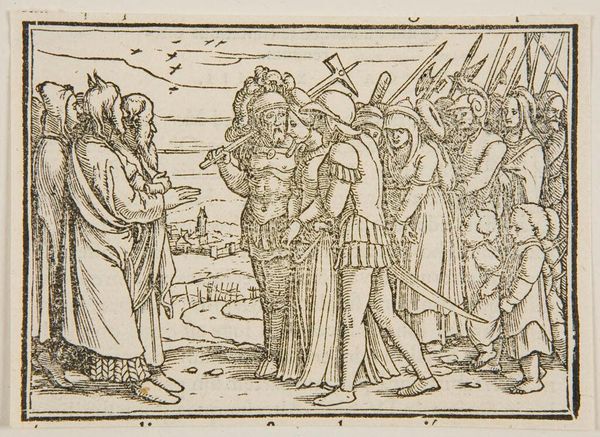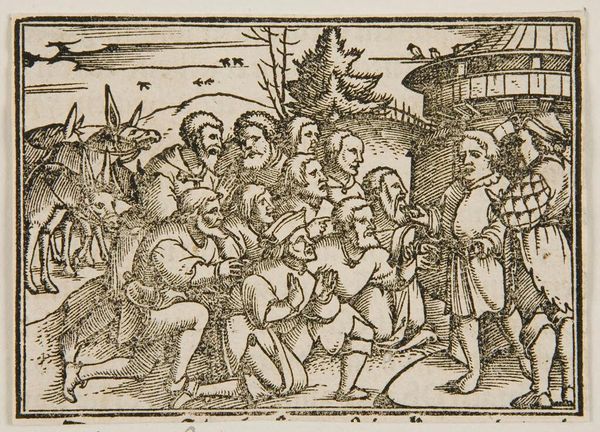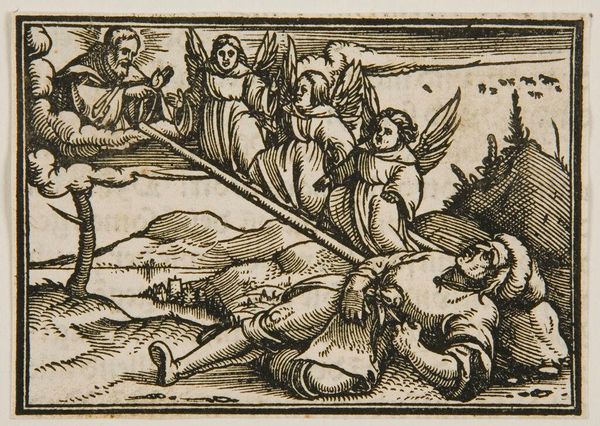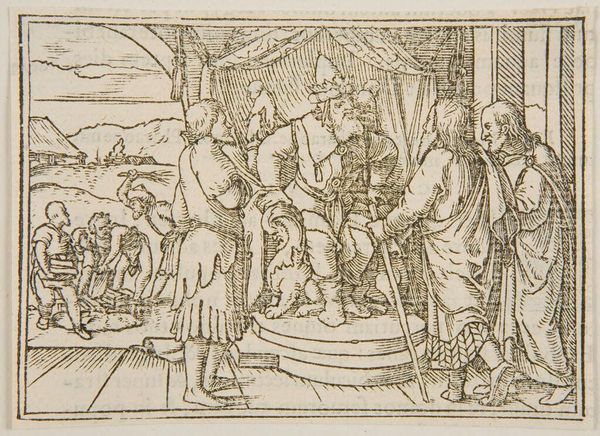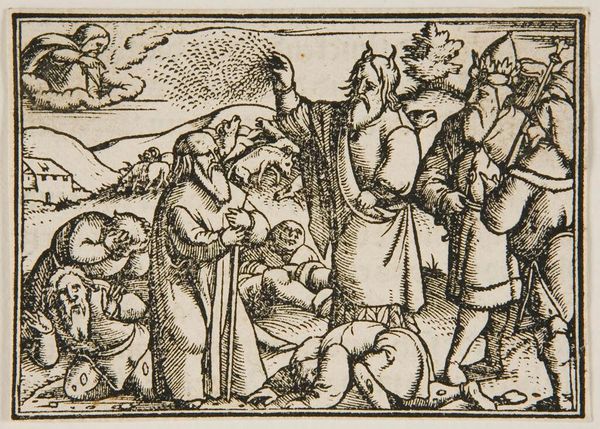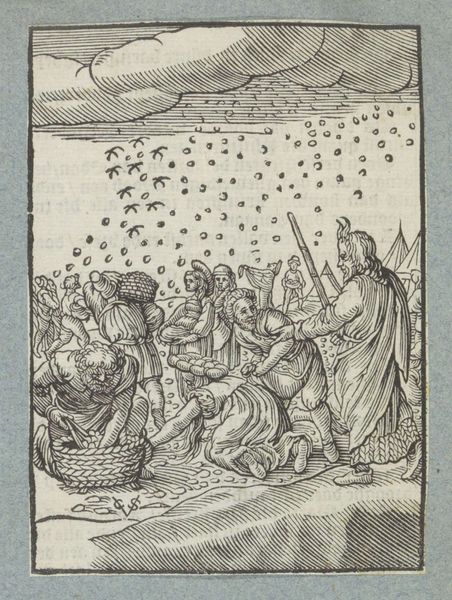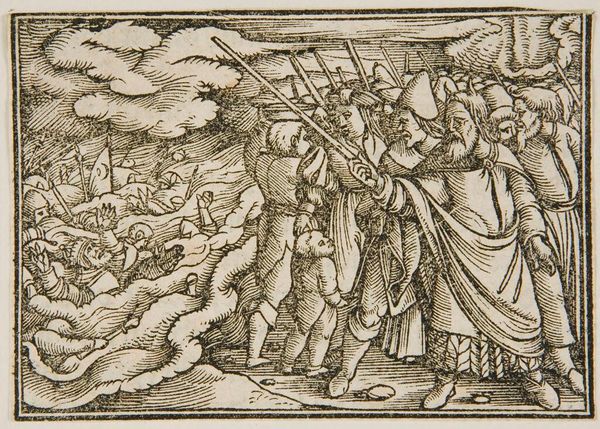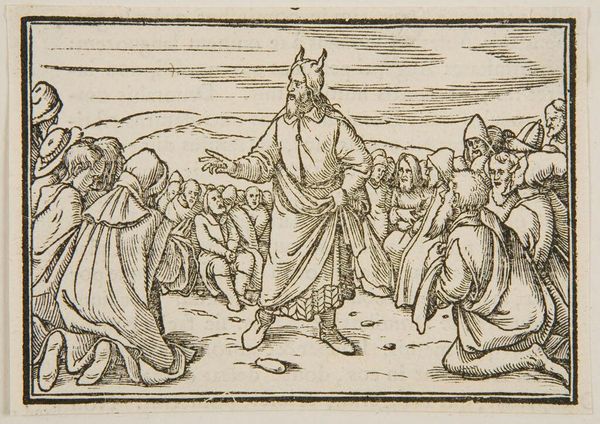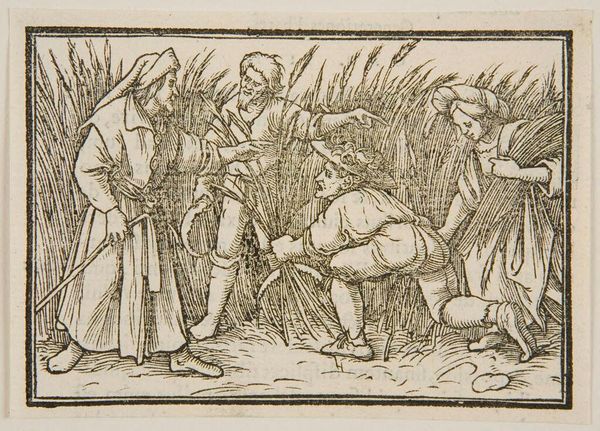
Copyright: CC0 1.0
Curator: Holbein the Younger’s woodcut, “Ex. XVI,” showcases a biblical scene, rendered with remarkable detail in the early 16th century. I’m struck by the communal aspect represented here. What are your first thoughts? Editor: The frantic energy is palpable. Everyone is scrambling, gathering something. It feels urgent, like survival depends on this collective effort depicted in stark black and white. Curator: Indeed. This image illustrates the story of the Israelites gathering manna in the desert. Holbein's choice of a woodcut allows for strong contrasts, emphasizing the miraculous provision within a socio-political context of religious upheaval. Editor: And that context is crucial. This imagery, distributed widely through prints, served to reinforce notions of divine support and communal responsibility, ideals deeply intertwined with the religious and social struggles of the time. It speaks to issues of dependence, and power. Curator: Absolutely. Holbein masterfully uses biblical narratives to comment on contemporary societal concerns. Editor: It’s a reminder that even seemingly simple illustrations carry complex layers of meaning, reflecting the anxieties and aspirations of their time. Curator: Yes, it’s a powerful piece that provides a lens to explore faith, community, and the power dynamics of the early Reformation. Editor: A starkly beautiful encapsulation of survival and belief, and an era rife with change.
Comments
No comments
Be the first to comment and join the conversation on the ultimate creative platform.
